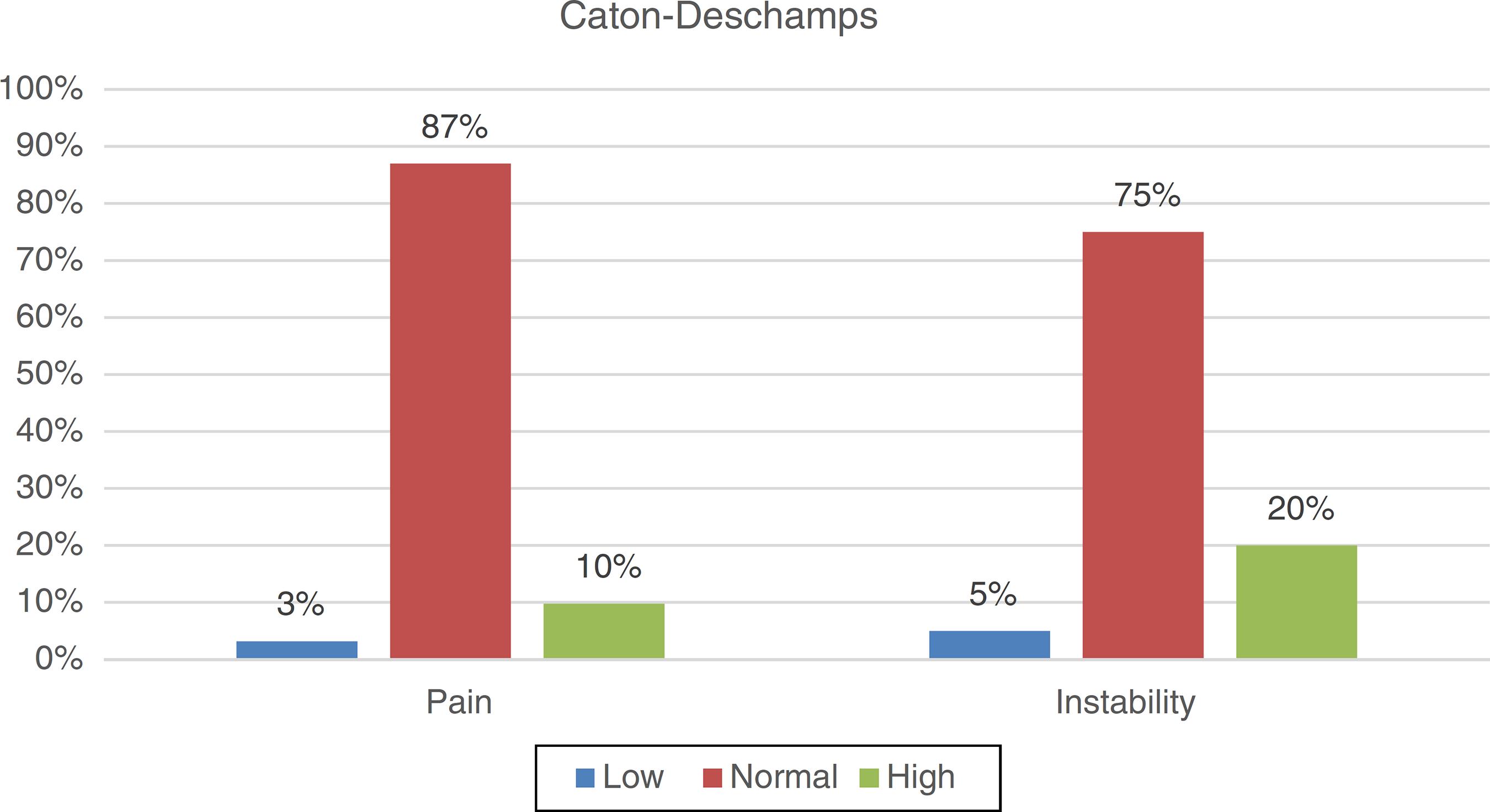ABSTRACT
Objectives:
To determine the prevalence of high patella in adult patients with knee pain, and to correlate patellar height with symptoms of patellar instability, episode of patellofemoral dislocation and anterior pain in the knee; and also verify the concordance correlation between the Insall-Salvati and Caton-Deschamps indices.
Method:
Cross-sectional study analyzing the medical records of patients with knee pain, using lateral view knee radiographs with 30º degrees of flexion and computed tomography. The values of the Insall-Salvati index and the Caton-Deschamps index were used to determine the patellar height.
Results:
A total of 756 records were analyzed, resulting in 140 knees studied, 39% men and 61% women. Both indices produced statistically significant associations for the occurrence of high patella and signs of instability and episodes of dislocation, but there was no significant association for anterior knee pain. The Kappa index obtained when analyzing the concordance correlation between the Insall-Salvati index and Caton-Deschamps index points to a regular association between them.
Conclusion:
Patients with high patella present a higher prevalence of instability. Having a high patella has no significant relationship with the presence of anterior knee pain. The Insall-Salvati and Caton-Deschamps indices demonstrate a regular agreement on the presentation of patellar heights results.
Keywords:
Patella; Patellar dislocations; Chondromalacia patellae; Pain



